 |
| ''The toileter of Venus'' Francois Boucher 1751 |
ROCOCO ас style appears in the early 18th century in Paris, France. Takes it's name from the French '' rocaille '' which means The rock of a broken shell - motifs that often form the design.Rococo replaced the heavy style of Baroque, who performed the task to convey the grandeur and power of absolute power. The Era in which Rococo appears characterized the carefree life at the French court and also the pursuit of happiness and love. In painting are typical mythological and erotic scenes, images of entertainments, balls and shows. ROcoco was looking for unity and harmony of the different elements in the interior: the corners of the rooms are rounded. furniture, mirrors and candlesticks are gilded and exquisitely combined with brilliant metallic decorations .Preferred colors were delicate pastel shades of pink, light blue, beige, pale green, and the combination of white and gold - The furniture was elegant and frivolous, with gilt floral elements and lots of details and natural and flower motifs. Typical were the luxury porcelain tea sets which were mostly for decoration than for practical use, all was about how it looks. One of the main components in the interior of a rococo was the gilt-framed mirror placed over the marble fireplace and on the upper part are arranged all sorts of porcelain figurines, clocks, candlesticks, lacquered boxes and other trinkets.. In this period the Eastern and Chinese influence are increased . In furnishing palaces there was almost always and Chinese room, furnished with china and Chinese furniture that were right fit in the style of Rococo. From China were borrowed the Wallpaper which contributed for the color and figural palette. By mid-18th century rococo gradually gave way to neoclassicism.
 |
| Marquise de Pompadour at the Toilet-Table by Francois Boucher, 1758 |
 |
| Madame De Pompadour by François Boucher (1756) |
 |
| Bedroom in Rococo style |
 |
| Rococo furniture |
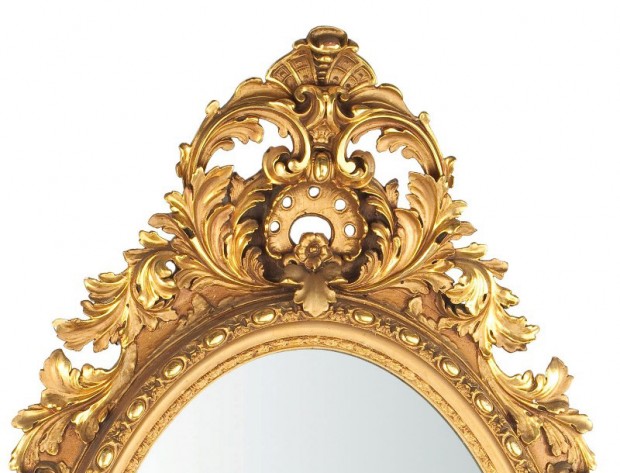 |
| Rococo style gild wood mirror |
| Rococo mirror in Ludwigsburg Palace, Germany |
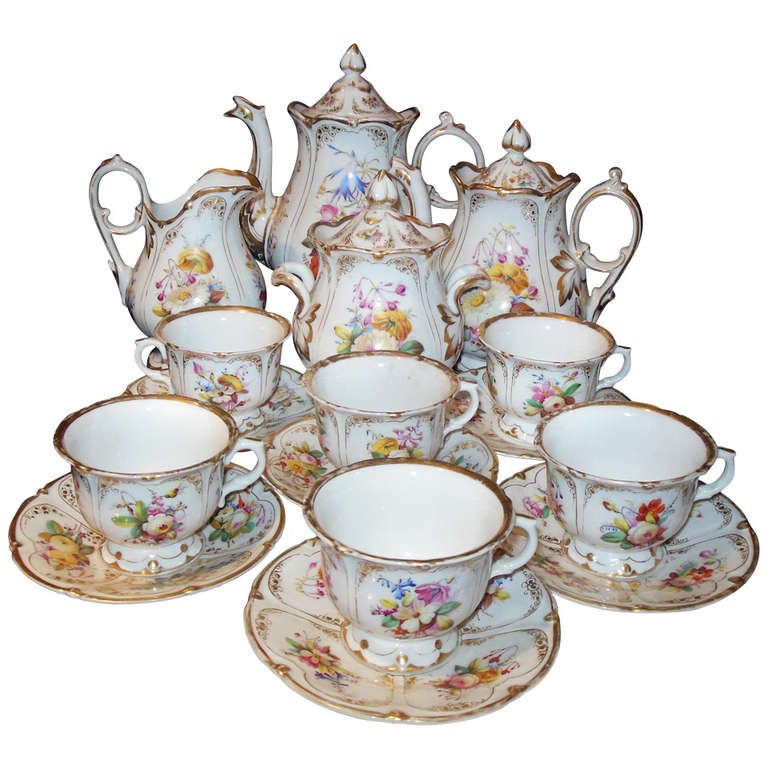 |
| Rococo tea set |
 |
| Rococo wallpaper |
One example of the Chinese influence in Rococo style and furnishing is the Chinese room in Claydon House, Buckinghamshire. Here the rococo continues, but this time in a form known as Chinoiserie — essentially a Chinese version of the rococo decorative style. It represents fanciful European interpretations of Chinese styles.Sometimes copied Chinise objects but more frequently originate in designer's imagination. Inspired mostly by the importation of porcelain and silk from China and Japane. (The popularity of chinoiserie peaked around the middle of the 18th century, when it was easily assimilated into rococo by the works of Francois Boucher) The entire room is a fantasy of carved pagodas, Chinese fretwork, bells and temples while oriental scrolls and swirls swoop around the walls and doors reaching a crescendo in the temple-like canopy, which would have once contained a bed, but now gives a throne-like importance to a divan.
 |
| Chinoiserie plasterwork and carved wood decoration in the Chinese Room at Claydon House, Buckinghamshire |
 |
| The Chinese Room at Claydon House, Buckinghamshire. |
 |
| Modern Chinoiserie wallpaper by ''De Gournay'' |
 |
| Chinoiserie porcelain |
MARIE ANTOINETTE (2006)
is a movie about queen of France, Marie Antoinette, in the 18th century. In the movie, a great amount of pastel, sorbet colors were used to enhance, even exaggerate the art style of the Rococo period. GOTHIC:
Gothic is a medieval style that originated in 12th century Paris. Gothic style is typical of Germany, France and England, where he continued until about 1550. Gothic architecture emphasizes vertical shapes and skeletal stone structures, pointed arches and rosette windows. Cathedrals are often decorated with statues outside often depicting saints and biblical paintings inside with scenes from the Old and New Testament. It is believed that Gothic cathedrals are microscopic representation of the world. Pointed arches represent aspiration to Heaven, and the height and majestic dimensions are designed to leave a sense of the greatness of God and the misery of mortal creatures.
In the mid 18th century in the United Kingdom began a trend towards a return to the Gothic style called Neogothic . Pioneer of this revival of Gothic architecture is a writer and public Horace Walpole. He is the author of the novel "The Castle of Otranto", which pave the way to a whole new literary genre - that of the Gothic novel. . There are lots of classic Gothic novels as ''The Hunchback of Notre-Dame'' by Victor Hugo, ''Frankenstein'' by Mary Shelley, ''Dracula'' by Bram Stoker and of course ''Vampire'' the first published modern vampire story by John William Polidori. In 18th century Gothic is primarily about atmosphere of creepy-hammer horror above anything else.
| Notre-Dame, Paris, France |
 |
| Cathedrale de Strasbourg |
 |
| Gothic rosette window |
 |
| Gothic gargoyles |
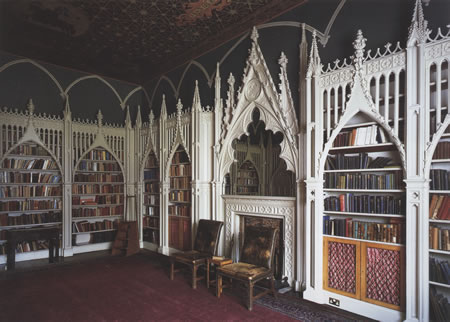 |
| Gothic interior - Strawberry Hill,Twickenham |
 |
| Gothic interior |
 |
| ''The hunchback of Notre-Dame'' Illustration |
 |
| Frankenstain |
 |
| ''Dracula'' |
NEO-CLASSICISM is the most influental style of the second half of the 18th century. Associated with the Age of Enlightenment, and in particular with the study at the time of the ancient classics and archaeological discoveries.
''During this time, writings by the Renaissance architects Giacomo da Vignola and Andrea Palladio were widely translated and read. These writings inspired appreciation for the Classical orders of architecture and the beautifully proportioned architecture of Classical Greece and Rome.''The Principles of neo-classicism are borrowed from the architecture of ancient Greece and ancient Rome and are used as the new interpretation of the old. .Neo-classical architecture is a reaction against the redundancy in baroque and rococo styles. it is an architectural nostalgia for the lost world of antiquity and a attempt to return to purity in architecture. It is a search for a '' true style '' and desire to establish architectural standards as a national trend with precise and universal values. The Classic trends are linked to the national consciousness, as opposed to the Baroque, which is associated with state power , authority and power of the church. Dimensions, proportions and symmetry are key elements in the architecture of neo-classicism.
In Paintings we can associate the neo-classicism with the use of antion element in the composition. often the models are dressed in ancient clothes like toga or there are depict objects from ancient Rome or Greece, like busts, statues, columns, candlesticks, urns, ets.
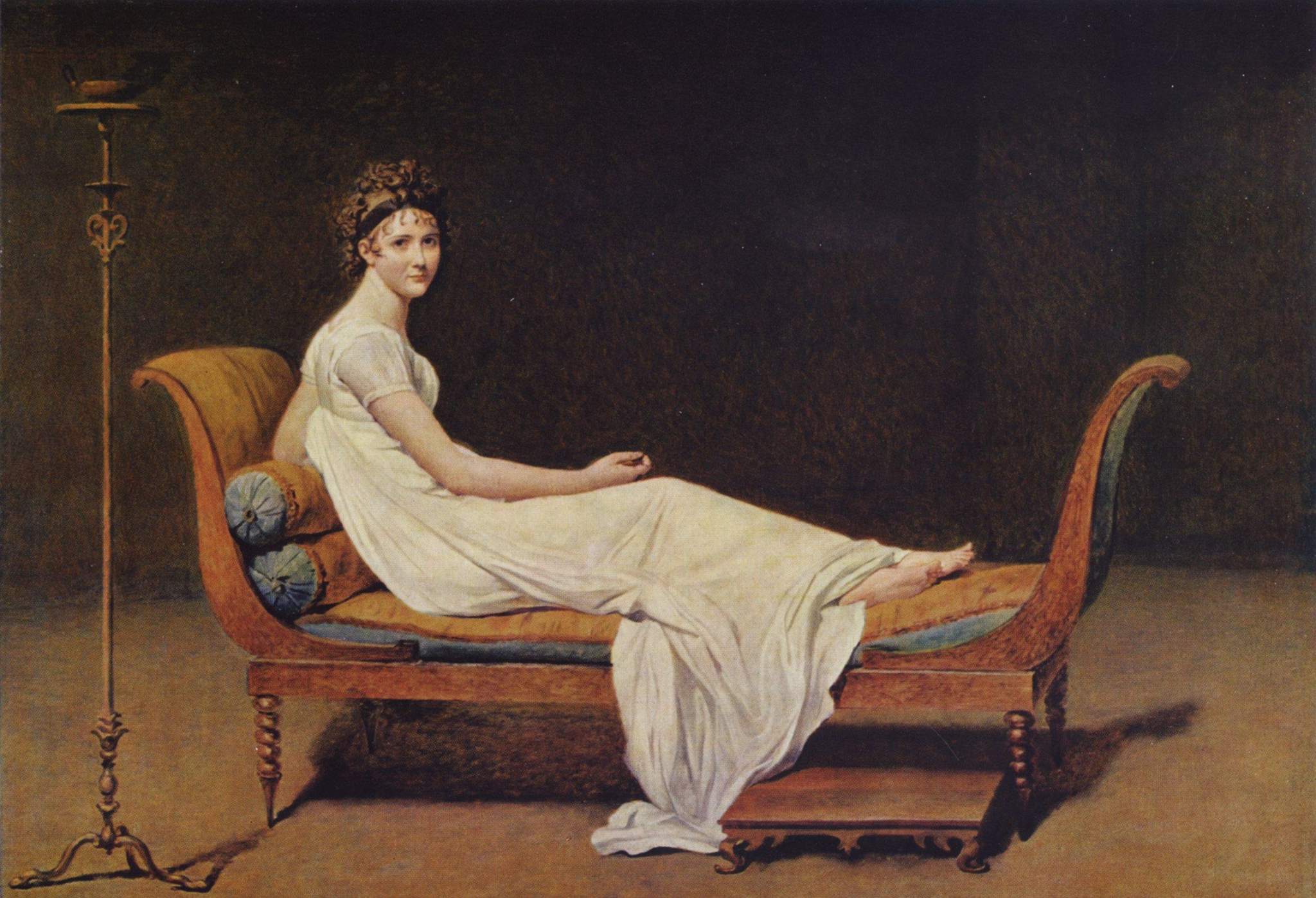 |
| Portrait of Madame Récamier by Jacques-Louis David (1800, Louvre) |
 |
| Madame Raymond de Verninac by Jacques-Louis David |
| French Pantheon |
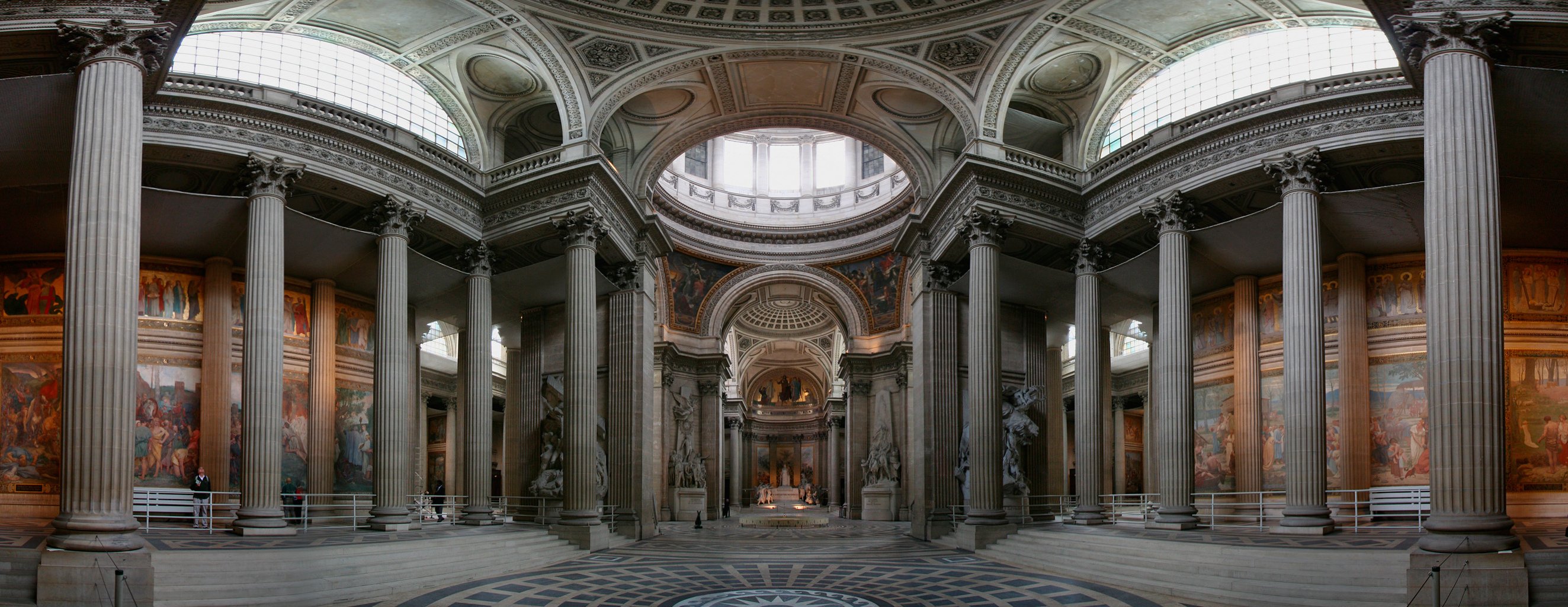 |
| Inside panoramic view of the French Panthéon. |
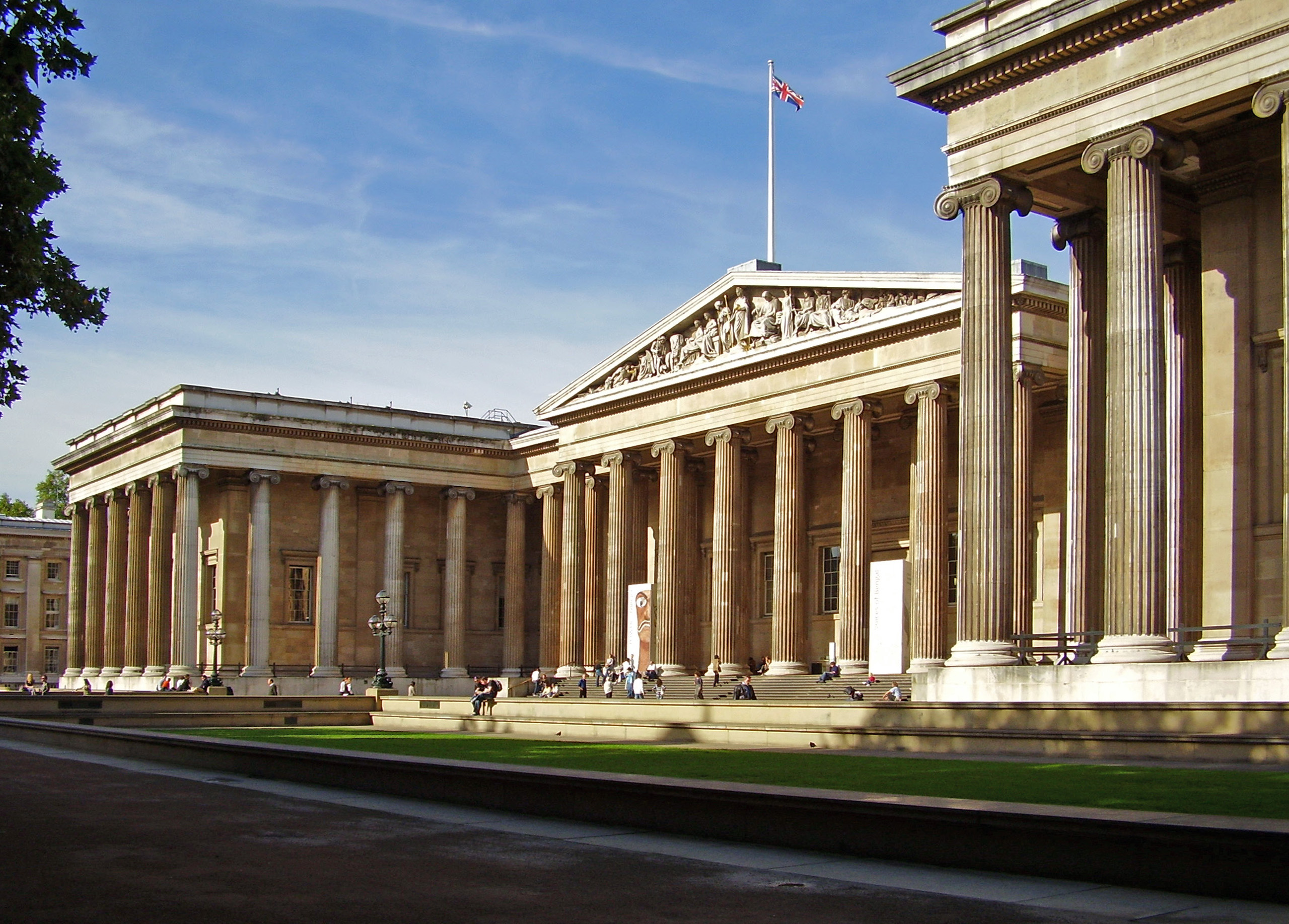 |
| British museum |
 |
| Brandenburgs gate, Berlin, Germany |
 |
| The entrance hall of Osterley Park, London Borough of Hounslow |
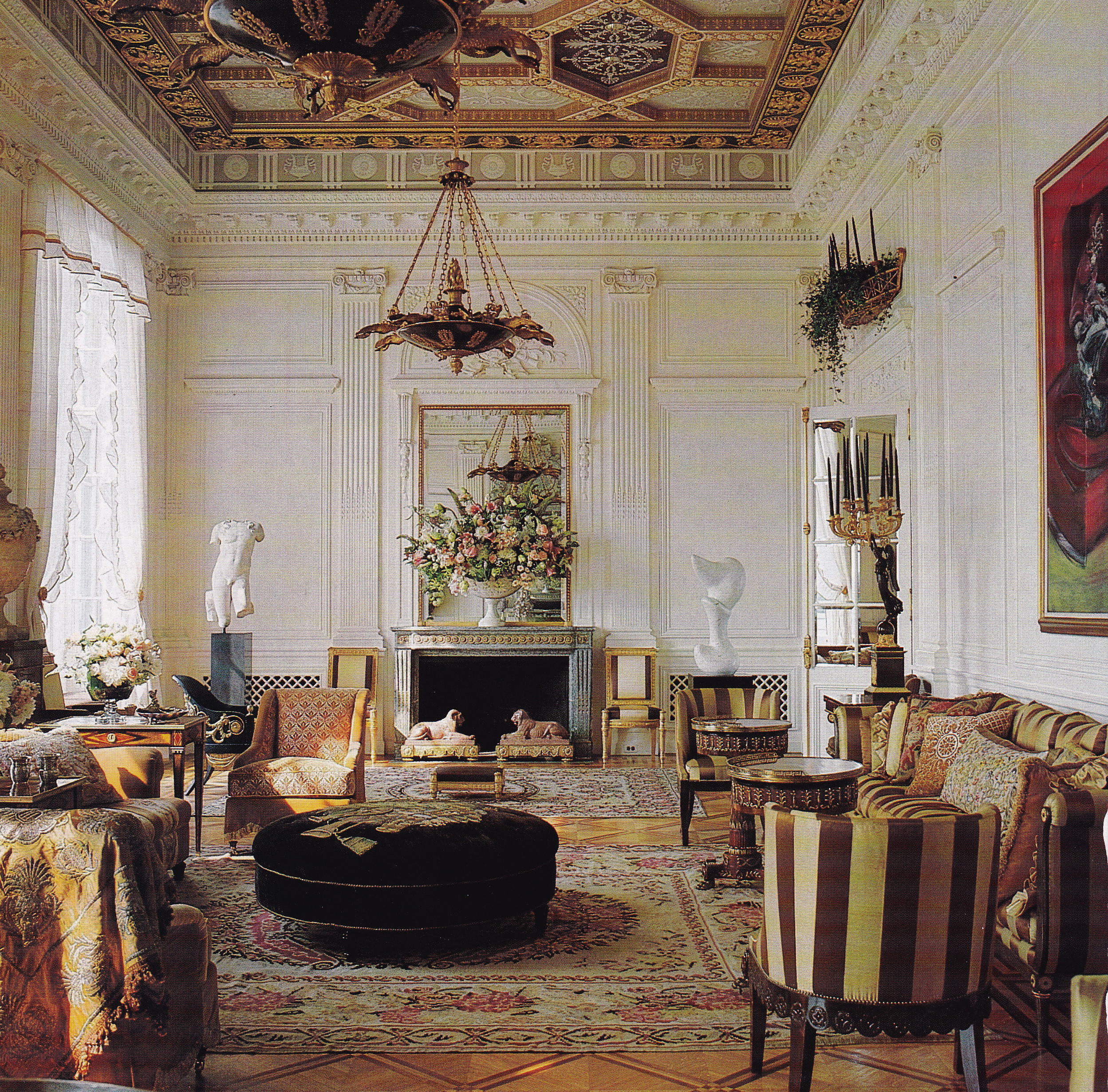 |
| French Neo-classical interior living-room |
 |
| Empire silhouette |
 |
| Modern Empire line wedding dress |
Links:
http://en.wikipedia.org/wiki/Claydon_House
http://en.wikipedia.org/wiki/Marie_Antoinette_(2006_film)
http://en.wikipedia.org/wiki/Chinoiserie
http://en.wikipedia.org/wiki/Strawberry_Hill_House
http://www.degournay.com/inspiration.php
http://architecture.about.com/od/neoclassical/a/What-Is-Neoclassical-Architecture.htm
http://architecture.about.com/od/ideasapproaches/g/Primitive-Hut.htm
http://en.wikipedia.org/wiki/Osterley_Park
http://en.wikipedia.org/wiki/Empire_silhouette
http://en.wikipedia.org/wiki/Sir_John_Soane's_Museum


.png)

No comments:
Post a Comment